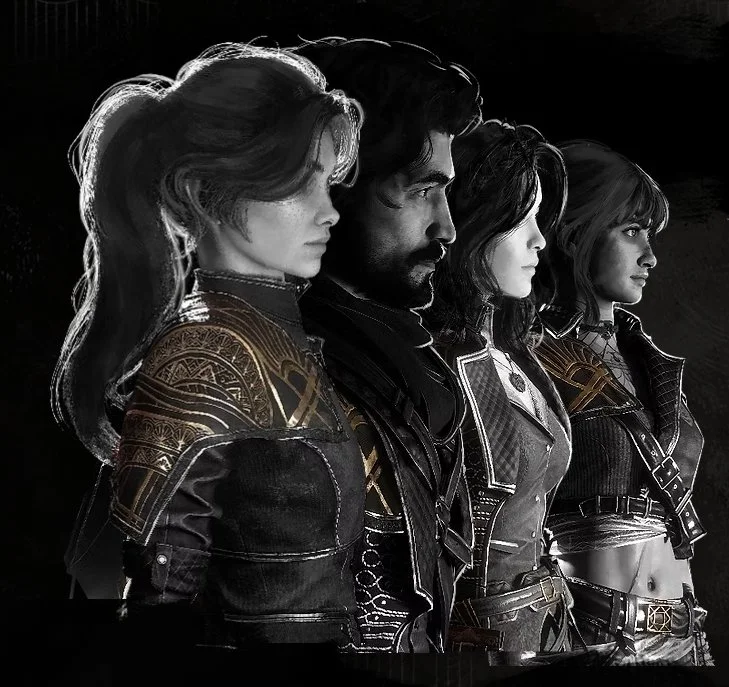Psychological Theories of Motivation in Video Game Development
Video games are a powerful medium that captivates millions of players worldwide. Understanding the psychological theories of motivation can significantly enhance game design, ensuring that games are engaging, enjoyable, and satisfying for players. This article explores key psychological theories of motivation, including Self-Determination Theory, Flow Theory, and Reinforcement Theory, and examines how they can be applied to video game development.
Self-Determination Theory (SDT)
Self-Determination Theory, developed by Deci and Ryan, posits that people are motivated by three basic psychological needs: autonomy, competence, and relatedness. When these needs are fulfilled, individuals experience intrinsic motivation and greater well-being.
Autonomy: The need to feel in control of one's actions and decisions.
Competence: The need to feel effective and capable of achieving goals.
Relatedness: The need to feel connected to others and experience a sense of belonging.
Autonomy:
Open World Design: Games like The Legend of Zelda: Breath of the Wild allow players to explore vast environments and choose their own paths, providing a sense of freedom and control.
Meaningful Choices: Games that offer branching storylines or multiple solutions to problems, such as Mass Effect or The Witcher 3: Wild Hunt, enhance player autonomy by allowing them to make significant decisions that impact the game world.
Competence:
Progressive Difficulty: Games like Dark Souls challenge players with progressively difficult levels and enemies, creating a sense of achievement and mastery as players overcome obstacles.
Skill Development: Games that require strategic thinking, problem-solving, or skilful execution, such as StarCraft II or Overwatch, satisfy the need for competence by allowing players to develop and demonstrate their abilities.
Relatedness:
Multiplayer Features: Games like Fortnite and World of Warcraft provide opportunities for social interaction, cooperation, and competition, fulfilling the need for relatedness through team play and online communities.
Narrative and Characters: Games with compelling stories and well-developed characters, such as The Last of Us or Persona 5, create emotional connections and foster a sense of relatedness with in-game characters and narratives.
Flow Theory
Flow Theory, introduced by Mihaly Csikszentmihalyi, describes a state of complete immersion and engagement in an activity. Flow occurs when there is a balance between challenge and skill, clear goals, and immediate feedback.
Balancing Challenge and Skill:
Adaptive Difficulty: Games like Left 4 Dead use adaptive difficulty systems that adjust the challenge based on player performance, ensuring that players remain engaged without becoming frustrated or bored.
Level Design: Well-designed levels that gradually increase in complexity and difficulty, as seen in games like Celeste, help maintain the balance between challenge and skill, promoting a flow state.
Clear Goals:
Mission Objectives: Games that provide clear, concise objectives, such as Assassin's Creed or Grand Theft Auto, help players understand what they need to accomplish and maintain focus.
Quest Systems: RPGs like The Elder Scrolls V: Skyrim use quest logs and markers to guide players, ensuring they always have a sense of direction and purpose.
Immediate Feedback:
Visual and Auditory Cues: Games that provide instant feedback through visual effects, sound effects, and haptic responses, such as Sekiro: Shadows Die Twice, help players understand the impact of their actions and stay immersed.
Reward Systems: Implementing reward systems, such as experience points, loot, and achievements, as seen in games like Borderlands or Diablo III, provides continuous positive reinforcement and keeps players motivated.
Reinforcement Theory
Reinforcement Theory, based on the work of B.F. Skinner, focuses on how behavior is influenced by rewards and punishments. Positive reinforcement encourages the repetition of desired behaviours by providing rewards, while negative reinforcement discourages unwanted behaviours by introducing adverse consequences.
Positive Reinforcement:
Reward Systems: Games like World of Warcraft and Destiny 2 use loot systems, leveling up, and achievements to reward players for completing tasks and overcoming challenges, encouraging continued play.
Progression Systems: Games that offer skill trees, unlockable content, and other forms of progression, such as Horizon Zero Dawn or Monster Hunter: World, provide a sense of accomplishment and motivate players to keep improving.
Negative Reinforcement:
Avoiding Punishments: Games that use mechanics like permadeath or losing progress, as seen in Rogue-like games like Hades, create a sense of urgency and caution, encouraging players to play more carefully and strategically.
Challenge and Consequence: Implementing meaningful consequences for failure, such as losing resources or restarting levels, can motivate players to avoid mistakes and strive for better performance.
Simply Put
Understanding and applying psychological theories of motivation can greatly enhance the design and development of video games. By incorporating principles from Self-Determination Theory, Flow Theory, and Reinforcement Theory, game developers can create engaging, satisfying, and immersive experiences that resonate with players on a deeper psychological level. As the gaming industry continues to evolve, the integration of these motivational theories will remain essential for crafting compelling and successful games.
References
Csikszentmihalyi, M. (1990). Flow: The Psychology of Optimal Experience. Harper & Row. Flow: The Psychology of Optimal Experience (Harper Perennial Modern Classics): Amazon.co.uk: Csikszentmihalyi, Mihaly: 8580001046242: Books
Deci, E. L., & Ryan, R. M. (2000). The "What" and "Why" of Goal Pursuits: Human Needs and the Self-Determination of Behavior. Psychological Inquiry, 11(4), 227-268. The "What" and "Why" of Goal Pursuits: Human Needs and the Self-Determination of Behavior: Psychological Inquiry: Vol 11, No 4 (tandfonline.com)
Skinner, B. F. (1953). Science and Human Behavior. Macmillan. Science and human behavior. (apa.org)
Yee, N. (2006). The Demographics, Motivations, and Derived Experiences of Users of Massively Multi-User Online Graphical Environments. Presence: Teleoperators and Virtual Environments, 15(3), 309-329. The demographics, motivations, and derived experiences of users of massively multi-user online graphical environments | Presence: Teleoperators and Virtual Environments (acm.org)
Isbister, K. (2016). How Games Move Us: Emotion by Design. MIT Press. How Games Move Us (mit.edu)









